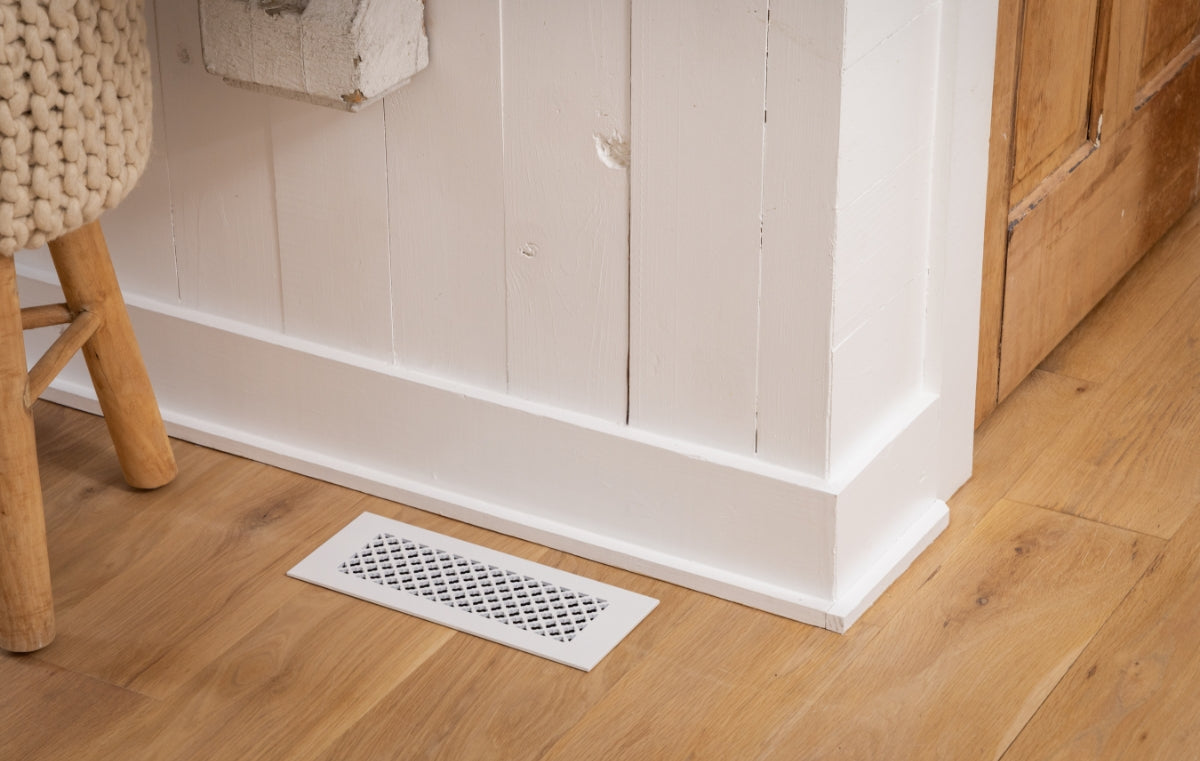Top Tips: How to Install Air Vent Covers on Ceilings, Walls, and Floors
You’ve ordered and received your new beautiful grille or register from Reggio Register. You unbox it, and are thrilled with the way it looks and feels. But now as you look at the open vent holes, you may wonder “how exactly do you put on these covers?
Are there special tools involved? Do I need to be handy? or “wait, is putting this register in really as easy as it seems?”
Here at Reggio Register, we’re here to tell you to not sweat it. We’re going to cover how to install vent covers . . . in mere minutes. Below are some basic tips to keep in mind for installing floor, wall, and ceiling vent covers.
How to Install Air Vent Covers on Walls & Ceilings
Remove your existing grille using a screwdriver to unscrew and take off the old cover from the wall or ceiling.

Next, simply mount the wall or ceiling air register and secure it with screws (included when you request screw holes). Your register should now be settled in (and looking good!) on your wall or ceiling.
Register Review: What Exactly Are Holes & Lips?
Remember that registers or grilles installed on ceilings and walls both require holes/screws (and a screwdriver for easy installation). The reference to holes refers to the screw holes for mounting the grille.

When installing into a wall or ceiling, you need screw holes. With a floor application it's your preference (more on that next). Many customers use screw holes when installing on carpet because the thickness of the carpet prevents it from sitting securely.
Other customers use screw holes to prevent children from lifting the grille out of the opening. The options are up to you and your home needs.
Although optional for ceilings or walls, an underside lip is used to hold the register/grille in place. This lip on the back ranges between approximately ¼" to ½" deep and fits nicely into the ductwork. The border that runs around that lip and sits on top of your opening is approximately 3/16" thick.
If you choose to add the underside lip with your order, note that your vent cover must be cut to the exact "inside" measurements or a little bit bigger (otherwise there’s a chance your underside lip will not fit).
Learn More About Underside Lips
How to Install Air Vent Covers on Floors
If you are installing a standard floor register, start with fitting in the louver frame (sold separately) directly into the air duct opening. The edge of the register should be sitting on top of the floor rather than flush with it. That's it! Gravity alone will keep your floor register flat in place.
If you have a high-traffic space with dogs and kids, you can choose to secure the grille cover down by using screws to secure it.

If you are installing a wood flush-mount floor register, start by positioning the integral flush mount frame (included) over the duct opening, allowing even spacing on all four sides.
Next, drill a small pilot hole inside the recessed area of the frame at an angle. Make sure the frame does not shift, and then use finishing nails to attach the register to the sub-floor.
To complete, cut and fit your flooring flush to all sides of the frame. Then stand back and enjoy the view of a clean-cut and continuous wood floor!
With Any Installation Type: Don't Forget About Louvers
Gain better control over your air flow and direction by adding a louver to your register.

Our louver assemblies are designed to fit behind our grilles and can be adjusted easily with a screwdriver to change the volume of warm or cool air moving through your unit.
Foam outer strips are included to prevent damage and ensure a proper fit. When cutting out the space for the new grille, be sure to allow 2-5/16” clearance for louvers behind the grille.
Reggio Register now offers a directional louver that comes attached to any of the Made to Order collection registers. The slats sit at a 30 degree angle to direct air away from windows and curtains toward the center of the room. Because this louver comes connected to the register these cannot be retrofitted at this time.
The process of installing an air vent cover should be a breeze once you get started. If you have any struggles or questions, don’t be afraid to give our Reggio Register team a call.

